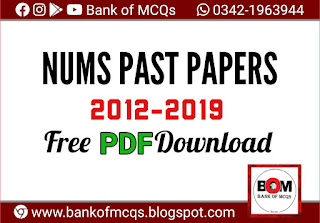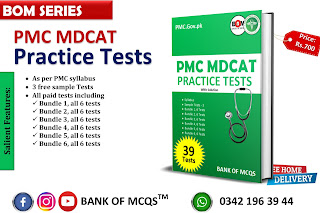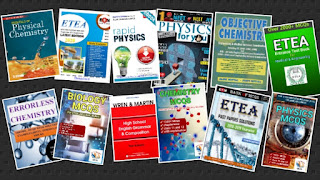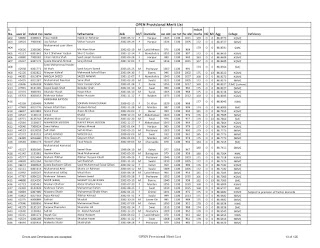fundamental concept in chemistry
Q. 1. The soul of chemistry is its
dealing with
a. Internal structural changes in
matter
b. Composition of matter
c. Properties of matter
d. Composition and properties of
matter
(d)
Q. 2. All of the following statements
are incorrect for 20 mol of hydrogen peroxide except
a. it has 20 mol of hydrogen atoms
b. it has 30 mol of oxygen atoms
c. it has 80 mol of atoms
d. 30 mol of hydrogen atoms
(c)
Q. 3. If proton number of two atoms is
same then it can be concluded that
a. they are isotopes
b. compounds of both with CI2 will be
similar in reactivity towards other compounds
c. both have same colors
d. both have same melting points
(b)
Q. 4. A chemist poured lemon juice on
soil, the idea that he may have in his mind is that
a. there may be a possibility of a
chemical reaction
b. lemon juice is dangerous to health
c. lemon juice is dangerous to health
d. water should be preferred over
lemon juice for drinking
(a)
Q. 5. Dr. Khan has discovered two
isotopes of an element with atomic number 119. The relative
abundance of isotopes 119Uue300 and
119Uue305 is 70% and 30% respectively. The average
atomic weight of Uue is
a. 301.5 a.m.u
b. 302.5 a.m.u
c. 303.5 a.m.u
d. 304.5 a.m.u
(a)
Q. 6. Which of the following is not
related to a.m.u
a. gram
b. kilogram
c. microgram
d. gram/lit
(d)
Q. 7. The number of significant
figures in 0.00200 is
a. two
b. three
c. five
d. one
(b)
Q. 8. All of the following statements
are incorrect except
a. precision and accuracy should go
side by side in a scientific work
b. scientific work must be precise,
accuracy is not essential
c. scientific work must be accurate,
precision is not essential
d. +calculations must be made before
any experiment
(a)
Q. 9. Empirical formula and formula
unit of an ionic compound
a. are always similar
b. are always different
c. may be similar or different
d. ionic compounds don’t’ have any
empirical formula
(c)
Q. 10. Copper (II) oxide is mixed with
organic compound during combustion analysis. The purpose is
a. to carry out complete combustion
b. to reduce the economy of the
process
c. to reduce the time for completion
of the reaction
d. all of the above
(a)
Q. 11. Bismark brown is a dye. Its
molar mass is 228.3 g/mol. When the dye was analyzed by a scientist, it was
found that it contains 30.68% nitrogen. How many nitrogen atoms are there in
each Bismark brown molecule?
a. 6
b. 5
c. 4
d. 3
(b)
Q.12. The mass of 2 mole of sodium hydroxide
will be
a. 2 g
b. 20 g
c. 40 g
d. 80 g
(d)
Q. 13. “A” compound is always consists
of the same elements combined in the same fixed ratio”.
The statement is
a. a hypothesis
b. a fact
c. a law
d. an observation
(c)
Q. 14. Compound having highest boiling
point among the following is
a. HF(I)
b. HCI(I)
c. HBR(I)
d. HI(I)
(d)
Q. 15. Islamian genius investigated
that the amount of heat required to raise the temperature of 11 gram of water
form 30oC to 31oC is
a. one calorie
b. little bit greater than on calorie
c. little bit less than one calorie
d. never equal to one calorie
(c)
Q. 16. An atom is
a. smallest indivisible particle in an
element
b. smallest particle of an element
which can undergo a chemical reaction
c. building block of an element
d. always smaller than molecule
(b)
Q. 17. 10 moles of H2O contains
a. 100 moles of bonds
b. 100 moles of electrons
c. 30 atoms
d. 25 moles of hydrogen bonds
(b)
Q. 18. The volume of one kilogram of
water at 4oC is equal to one litre. The temperature of water is kept at 4oC
because water
a. has no dissolved gasses at this
temperature
b. has maximum density at this
temperature
c. polarity of water molecule is least
at this temperature
d. dipole moment has maximum value at
this temperature
(b)
Q. 19. A compound contains two
elements X and Y percentage of X is 20% (At.wt = 40) and that of Y is 80%
(At.wt =80). The empirical formula of the compound is
a. XY2
b. X2Y
c. X3Y
d. XY
(A)
Q. 20. A piece of paper is burnt in
air, the gas produced is passed through distilled water. The PH of water
solution will be
a. 1
b. 7
c. 2.1
d. 6.8
(d)
Q. 21. Which of the following is a
substance?
a. sea water
b. brass
c. tape water
d. graphite
(d)
Q. 22. Freezing point of a substance
is a temperature at which a liquid substance is converted to solid, it is
a. always lower than its melting point
b. usually a little lower than its
melting point
c. always higher than its melting
point
d. exactly the same as its melting
point
(d)
Q. 23. Number of covalent bonds in 10
mol of carbon tetrachloride is
a. 2.4 x 1025
b. 40
c. 4 x 1024
d. 6.4 x 1021
(a)
Q. 24. A student subtracted 0.00055
from 10.2345678 and reported the result as 10.23401. But his friend told him
that the result was wrong. What is the correct result?
a. 10.234017
b. 10.2340178
c. 10.234
d. 10.23
(d)
Q. 25. The following statement
contained in a student’s laboratory report is a conclusion.
a. a gas is liberated
b. colour of the gas is greenish
yellow
c. oxide of the gas is strongly acidic
d. the gas is chlorine
(d)
Q. 26. If 10g each of uranium and
hydrogen are converted into energy according to equation E =mc2
a. energy obtained from uranium will
be too much greater than that of hydrogen
b. energy obtained from hydrogen will
be a little bit less than that of uranium
c. energy obtained from hydrogen and
uranium will always be exactly equal
d. diamond
(c)
Q. 27. A student analyzed a sample of
sea water and found that it contained 2.3g of NaCi, 0.005g
of MgSo4, 0.234g of CaCI2 and 60.12g
of H2O. Total mass of the sample is
a. 62.659
b. 62.65
c. 62.70
d. 65.7
(d)
Q. 28. A 50.00 mL sample of a cough
mixture prepared by a pharmacist was found to have a mass of 46.0g. what is the
density (in g/mL) of this mixture. Stated to the correct number of significant
figures?
a. 0.92
b. 0.920
c. 0.9200
d. 1.087
(b)
Q. 29. Ozone (O3) filters the cosmic
rays of sunlight. How many oxygen atoms are there in 0.2 mole of ozone (O3,
molar mass 48.0 g/mol)?
a. 6.02 x 1022
b. 6.02 x 1023
c. 3.61 x 1023
d. 6 x 1023
(c)
Q. 30. On heating, the hydrated salt
CaSO4, xH2O loses its water of crystallization. In an
experiment it was found that when 0.2
mol of the hydrated salt was heated 0.10 mol of
water was lost. What is the molecular
formula of the hydrated compound?
a. CaSO4
b. CaSO3. ½ H2O
c. CaSO4.H2O
d. CaSO4.2H2O
(b)
Q. 31. Zirconium chloride reacts with
magnesium to produce Zirconium. The process is called Knoll process.
ZrCI4 + 2Mg Zr + 2MgCI2
How many moles Zr would be produced if
0.2 mol of Mg metal is used in the reaction?
a. 0.1
b. 0.01
c. 0.20
d. 0.05
(a)
Q. 32. Tobacco contains a poisonous
alkaloid called Nicotine. The molecular formula of nicotine is C10H14N2 (molar
mass = 162.23g). The mass percentage of nitrogen in nicotine, is?
a. 4.32%
b. 8.23%
c. 12.4%
d. 17.3%
(d)
Q. 33. A sample of an ionic compound
contains 2.82 g Na, 4.35 g CI, and 7.83 g O. The empirical
formula of this compound is:
a. NaCIO2
b. NaCIO3
c. NaCIO
d. NaCIO4
(d)








Comments
Post a Comment